New advancements, technologies, innovations, and regulations in the field of cardiology
For close to two decades, Novartis has been at the forefront of organising a highly regarded Frontiers in Cardiology meeting in Ireland. This annual event stands as a testament to Novartis’ commitment to advancing the field of cardiology and fostering collaboration among health-care professionals. As we commemorate the 18th anniversary of this esteemed gathering, it is evident that this meeting has established itself as one of the most significant national cardiology events in Ireland, driving innovation, knowledge sharing, and excellence in patient care.
This non-promotional educational meeting has played a pivotal role in providing a platform for healthcare professionals, researchers, and experts to exchange ideas, share best practices, and discuss the latest advancements in the field of cardiology. This event has become a cornerstone of the medical community, attracting renowned speakers, thought leaders, and clinicians from Ireland and beyond.
With each passing year, Novartis and the steering committee has diligently curated a comprehensive programme that addresses the evolving challenges and opportunities within cardiology. Through a careful selection of topics and engaging panel discussions, the meeting has consistently provided a rich learning experience for attendees. It serves as a gate- way to the latest research findings, innovative treatment approaches, and emerging technologies, ultimately enhancing patient outcomes and shaping the future of cardiology in Ireland.
Furthermore, Novartis has embraced the power of collaboration and multidisciplinary approaches, bringing together experts from various fields to foster a holistic understanding of cardiology. The meeting serves as a nexus where cardiologists, nurses, and other healthcare professionals with an interest in cardiology converge to exchange insights and establish collaborative networks, promoting a comprehensive and patient centered approach to care.
Advances in therapies, tools and technology are helping to make cardiology an even faster-paced and dynamic field of medicine. This was the focus of the recent Frontiers in Cardiology meeting, which aimed to highlight the most up to date research and practice in the prevention and treatment of cardiovascular related diseases.
Room for improvement when it comes to timely percutaneous coronary intervention (PCI)
The opening presentation was an exploration of the rele- vance of the 2023 ESC Guidelines for acute coronary syndrome (ACS) in an Irish context. This was delivered by Prof Robert Byrne, director of cardiology at the Mater Private Hospital, who was the chair of the taskforce that devised the most recent guidelines. He pointed out that the Irish Heart Attack Audit has been producing valuable reports on an annual basis, which offers the cardiology community an opportunity to look at certain quality indicators in the guidelines and thus see where we are in an Irish context.
For the first time, the guidelines combined three scenarios – unstable angina, ST-elevation myocardial infarction (STEMI) and non-STEMI. This posed a challenge but also presented an opportunity, Prof Byrne said, noting that following initial triage many of the elements of ACS are common across the spectrum.
For ACS, the central triage tool is an electrocardiogram (ECG), and the guidelines state that an interpretive ECG should be carried out within 10 minutes. Irish data shows that while patients brought to hospital by ambulance will receive an ECG relatively quickly, self-presenters experience longer delays, especially women. Prof Byrne noted that the guidelines specifically attempt to eliminate this disparity in the treatment of women. Yet this is an average of 28 minutes vs 25 minutes, and very few are meeting the 10-minute recommendation of the guidelines.
Beyond the ECG, he continued, the goal is to get from a working diagnosis to a final diagnosis. The guidelines state that a patient should be given a PCI within 120 minutes but patients who do not present directly to a primary PCI centre invariably experience delays in treatment, the professor noted. The audit shows that 80 per cent of patients brought to PCI centres by ambulance will receive a PCI within 120 minutes – only one-third of those who are transferred from other hospitals will receive a timely PCI, however.
Irish doctors are at the forefront of developments. There is enough quality of experience on the island, which is a compliment to the growing investment in cardiovascular science in Ireland –
Prof Ken McDonald
Unadjusted data from Letterkenny compared pre and post the Cross Border Initiative, however, showed that survival improved, with time from ECG to reperfusion going down to 100 minutes on average. “This is a positive news story in terms of improving patient outcomes,” said Prof Byrne.
For non-STEMI patients, the professor said the data does not support angiography within 24 hours. “There is no improvement in rushing everyone to the cath lab with non- STEMI,” and hence this has been downgraded from a Class I recommendation to a Class II. The Irish Heart Attack Audit also clearly illustrates how the density of PCI differs widely, with some geographical pockets requiring more focus, he noted.
A further new Class II recommendation in the guidelines is the use of polypills, and Prof Byrne issued a call to industry for more polypills as the benefits are clear in terms of patient adherence.
Ireland can also improve in terms of its routine data capture, he added, with 30 day mortality information incomplete in 50 per cent of patients. “Patient-centred care is the cornerstone of treatment – for most patients the heart attack is the first knowledge they have heart disease.”
No perfect test for stable cardiac chest pain
“Forget cardiovascular magnetic resonance (CMR), Ireland should copy the UK and Denmark and roll out a national coronary computer tomography angiography (CCTA) programme” was the motion up for debate, with Dr Bridóg Nic Aodha Bhuí proposing and Dr Daniel Creegan opposing the motion (specialist cardiology registrars).
Chest pain is the most common presentation to both GPs and the emergency department, but identifying whether that chest pain is cardiac in nature is the challenge, said Dr Nic Aodha Bhuí. She pointed out that the NICE guidelines state that cardiac computer tomography (CT) is first line for evaluation of stable angina, while the American Heart Associa- tion/American College of Cardiology guidelines recommend CT more than magnetic resonance imaging (MRI).
The evidence for CT is clear, she said, with an excellent specificity and sensitivity comparable to invasive coronary angiogram. Practically speaking, it is a brief scan so better for claustrophobic patients and also imposes fewer limitations for patients with cardiac devices. Importantly, the CTCA offers an anatomical assessment of coronary arteries and plaque burden including identifying high risk plaque. The importance of plaque burden was highlighted by data from the Western Denmark Heart Registry, which showed an increase in event rate with increasing calcium score and number of vessels with obstructive coronary artery disease (CAD). In addition, the Scot Heart trial illustrated how bene- ficial CT is for risk stratification.
Dr Nic Aodha Bhuí acknowledged there is considerable room for improvement with respect to CT scanning in Ireland. In terms of cost effectiveness, in a NICE analysis of CT vs cardiac MRI, CT came out on top. She pointed out that in Ireland, patients typically have to go to a private hospital to avail of an MRI, which means we would see a similar cost benefit to using CT instead. CT can also function as a gate-keeper to the cath lab, as observed in the DISCHARGE trial, where 50 per cent of the invasive CT coronary angiogram (CTCA) group had no sign of CAD.
Dr Daniel Creegan noted the lack of published evidence to support the use of cardiac MRI over CT. He used a case study, however, to illustrate how a CT can instigate a “litany” of investigations, while still failing to provide an accurate diagnosis. The Scot Heart trial investigators, meanwhile, found that CTCA increases the diagnosis of coronary heart disease (CHD) but actually decreases diagnosis of angina due to CHD. The question, he said, was whether the patient needs an intervention or if a functional test like MRI is required. “The CT doesn’t give us that whereas MRI does.” NICE guidelines recommend CTCA over cardiac MRI but Dr Creegan cautioned of the inherent focus on the financial implications of these recommendations as a limitation. Although cardiac MRI is an expensive test, other data suggests that over the longer term it could save a health system money. What is needed, he concluded, is “the perfect test”; one that is cheap, accessible, offers structural and functional information, and accurately tells doctors which patients need intervention. It must also be low risk and acceptable to patients. “The perfect test does not exist but we are more likely to achieve all this with cardiac MRI.”
In the ensuing panel discussion, it was noted by Prof Mc- Donald that choosing the right test for the right patient often came down to accessibility and availability – waiting lists for CTCA can be up to two years. Patient selection is very important, added Dr Patrick O’Boyle, noting the limitations of CT in older patients due to calcium deposits. “The chances of an inconclusive result increase.” The panel agreed that both tests have their pros and cons, and in the absence of “the per- fect test”, an individualised approach should be taken.
Cardiology and endocrinology increasingly intertwined
The following day, the role of the new diabetes drugs in car- diovascular health was succinctly outlined by consultant endocrinologist Dr Maeve Durkan of The Cork Clinic, who said that as the field becomes more complex, cardiologists and diabetologists are working together and sharing many patients. She discussed the new 2023 European Society of Cardiology (ESC) Guidelines for the management of cardio- vascular disease in patients with diabetes and explained how they address the respective roles of glucagon-like peptide 1 (GLP-1) agonists and Sodium-glucose co-transporter-2 inhibitors (SGLT2i).
Diabetes is part of a trilogy that involves chronic kidney disease and cardiovascular disease, noted Dr Durkan. For newly diagnosed patients with diabetes and CAD, the most recent ESC guidelines recommend giving a GLP-1 agonist or SGLT2i, but for diabetic patients with chronic heart failure, the recommendation is to give an SGLT2i. This represents a “complete departure” from previous guidelines. The guide- line with respect to chronic kidney disease (CKD) states that patients with diabetes and CKD should be given an SGLT2i first-line, as long as their estimated glomerular filtration rate (eGFR) is over 20. “You will expect to see a drop in eGFR with SGLT2is but it will recover,” said the Dr Durkan.
Diabetes increases the risk of mortality, she continued, and to date survival outcomes for diabetic patients who had a prior myocardial infarction (MI) were poor, at 30 per cent at six-to-seven years post-MI. “But we will be able to break that barrier with the advent of those new drugs (SGLT2i’s),” she said.
Landmark studies exploring the use of the GLP-1 agonists such as liraglutide and semaglutide showed not only did they pose no additional cardiac risk, but there was a significant reduction in cardiac events and cardiovascular mortality. “The evidence is empiric for GLP-1 agonists,” said Dr Durkan, although she cautioned against commencing them in a patient who is post infarct in the critical care unit, given that they cause nausea and patients may be less likely to adhere – in this situation, an SGLT2i is preferable. In a patient where the primary burden is heart failure, an SGLT2 inhibitor is recommended first-line.
The EMPA-REG trial was the first time SGLT2is showed a mortality benefit and a reduction in heart failure hospitalisation, and this result was then replicated in the other SGLT2i trials. Trials in CKD have also shown that they help to pre- serve kidney function. “The benefit of this class of drugs was proven clearly,” said Dr Durkan.
Dr Durkan referenced the significant weight loss associated with the GLP-1 agonists, which has a positive impact on heart failure given that patients become much more functional. “If you come off the GLP-1 you will regain weight, whereas the SGLT2i has more modest weight loss.” She also noted that the majority of patients in DAPA-HF trial did not have diabetes, showing a pleiotropic effect. “SGLT2is have become the preserve of the cardiologist.” Adding these medications onto sacubitril/valsartan has no downside or harm associated with it, she added.
Side-effects associated with the SGLT2i include polyuria, polydipsia, thrush and urinary tract infections – if the latter two are repetitive then the drug must be stopped, she advised. Unsuitable patients include type 1 diabetes patients and the “atypical” type II diabetes mellitus (T2DM) patients, ie, those who are very lean/young or those who are on multiple daily insulin injections as they have no insulin reserve. And according to Dr Durkan, GLP1 agonists and SGLT2i can be combined. “This offers more than synergy,” she said. “It is the dream team of drug combinations.”
Patient-centred care is the cornerstone of treatment – for most patients the heart attack is the first knowledge they have heart disease
–
Prof Robert Byrne
Achieving stringent targets in dyslipidaemia – easier said than done
Dr Tadhg Prendiville, cardiology specialist registrar at St James’s Hospital, then discussed lipid guidelines and the impact of emerging therapies in this space. He told the audience that the ESC dyslipidaemia guidelines recommend aiming for an low-density lipoprotein cholesterol (LDL-C) level of less than 1.4mmol/L (for patients at very high cardiovascular (CV) risk, whether in secondary prevention or (rarely) in primary prevention) as well as a 50 per cent reduction from baseline. A high intensity statin is needed to achieve this 50 per cent reduction, he noted, “and by adding ezetimibe we should get them to target in theory”. Yet this is not playing out in real life, as the START registry in Italy in secondary prevention showed; just three per cent of patients achieved the LDL-C target of 1.4mmol/L plus 50 per cent reduction from baseline. Dr Prendiville added that Cork University Hospital (CUH) data showed 7.6 per cent of patients had achieved these target levels.
Very high-risk patients (as per the SCORE 10-year CV risk) must have more stringent adherence to these targets, he noted, for example, those with T2DM with target organ damage, late-stage kidney disease, or documented atherosclerotic cardiovascular disease (ASCVD) on imaging. International guidelines, however, do not necessarily agree on targets in dyslipidaemia, and there is also a lack of consensus on risk, said Dr Prendiville, noting a patient could be treated as high risk in one country and not in another.
New therapies are coming to market that target different sites in the LDL-C cycle, augmenting the effect of statins. Evinacum- ab is a new treatment for homozygous familial hypercholesterolaemia that trials have shown to be effective. While bempedoic acid has shown similar promise – the latter will come to market later this year hopefully, noted Dr Prendiville. Inclisiran is a novel injectable therapy that showed 50 per cent reduction in LDL-C in phase III clinical trials. Inclisiran may not be available in Ireland until CV Outcomes data from the ORION-4 study is published, with read out expected in 2026.
Dr Prendiville stated that while comprehensive lipid guidelines exist, they are complicated. New therapies will help more patients achieve their targets but they are expensive and may not have wide availability. Dr Prendiville concluded with “when in doubt, be aggressive.”
New therapies for familial hypercholesterolaemia effective, but difficult to access
Consultant cardiologist Dr Paul Keelan from Our Lady of Lourdes Hospital, Drogheda, followed with his insights into the early initiation of treatment in familial hypercholestero- laemia (FH). Gender and lifestyle still influence cholesterol levels in an FH patient but the discovery of proprotein convertase subtilsinkexin 9 (PCSK9) in 2003 followed by elucidation of the role of mutations in the PCSK9 gene in FH offered new means of moderating hypercholesterolaemia. Since then, several monoclonal antibodies have been devel- oped that inhibit PCSK9 – these include evolocumab, alirocumab, and bococizumab.
Yet, access to PCSK9 inhibitors is “very restricted”, especially in primary prevention, Dr Keelan explained. Evidence to support the diagnosis of HeFH must accompany the application for reimbursement approval. Diagnosis of HeFH must be made by either genetic testing, or by the Dutch Lipid Clin- ic Network Score or the modified UK Simon Broome criteria. This means that if a patient’s score improves while on other medication, they will not qualify for the PCSK9 inhibitor – “they become victims of their own success”. ChairProfessor Vincent Maher of Tallaght University Hospital agreed, calling the situation “very dichotomous”.
Use of ultra low contrast in PCI reduces harm to patients
The emerging concept of ultra low dose contrast intervention was then outlined by interventional cardiologist Dr Breda Hennessey from the Blackrock Clinic. “The game has changed over the past 20 years – we are treating increasingly complex patients and complex anatomy.” This means more patients are at higher risk of contrast induced nephropathy (CIN) – they have diabetes, they have CKD, they might be anaemic or simply be frail/elderly. CIN has been consistently shown to be associated with much worse outcomes, including longer hospital stays but also a high rate of mortality. Yet interventionists are more often finding themselves in situations where they can’t inject contrast for various reasons. “We are also treating a lot more surgical turndown so patients with complex disease where we have reached our contrast limit.”
This means patients with CKD who have a coronary event are less than half as likely to get an angiogram – the likely reason is that physicians are reluctant to do harm. While there is a fear that patients will end up on dialysis, mortality rates of ACS and concomitant CKD are high – patients are more likely to die if managed conservatively.
The ADAPT-DES trial showed that new adverse clinical events were highest in patients with CKD and contrast induced nephropathy, noted Dr Hennessey. “We need to get better at treating these patients.”
She outlined the key steps in planning ultra low contrast PCI, the main principle of which is using a contrast volume to eGFR ratio of less than one. “This is unlikely to harm these patients.” When this is adhered to, the risk of dialysis is less than one per cent and risk of contrast induced nephropathy is three per cent.” The advent of new PCI navigation support tools means operators must upskill but it has also made these procedures more straightforward, she concluded.
A novel clinic that addresses the over-lap between CVD and COPD
The establishment of a novel joint cardio-respiratory clinic in the community was described by Dr Lavanya Saiva, who noted the high prevalence of chronic obstructive pulmonary disease (COPD) in the presence of cardiovascular disease. When these diseases coexist, the risk of an adverse clinical outcome is much higher, she explained. “One-third of patients with COPD actually die of cardiac disorders.”
Given the shared risk factors and shared pathophysiology of both conditions, “it is clear that we have to optimise the treatment of these patients… and very clear we need to change the model of care”,said DrSaiva. An integrated approach would play a key role in addressing the gaps in patient care such as polypharmacy and education, as well as the diagnostic and therapeutic challenges.
This realisation has led to the establishment of an innovative combined cardio pulmonary clinic at Connolly Hospital, where Dr Saiva is based. Offering a “one stop solution for these patients”, it is staffed by a pulmonologist and cardiologist, as well as nurse specialists, physiologists, rehab coordinators and a physiotherapist from the respiratory team. It takes place once a month and following each clinic a multidisciplinary team meeting is held, which allows for an exchange of knowledge, interpretation of diagnostics and the management of polypharmacy. Typical reasons for refer- ral are undifferentiated dyspnoea or chest pain, or recurrent exacerbations of premorbid cardiopulmonary disease. It was seen that 20 per cent of patients initially referred to cardiology in fact had a respiratory diagnosis, and 10 per cent of those referred to respiratory had a cardiac diagnosis. “It is very clear we are approaching the multimorbid era and treating these patients in this combined cardio-pulmonary clinic will address gaps in current care. Going forward we are focusing on cardiopulmonary education, rehabilitation and advanced care planning.”
Success of a streamlined protocol for heart failure
Implementing guideline-directed medical therapy (GDMT) in heart failure was the subject of the presentation by Dr Ashok Tahilyani of Naas General Hospital. The consultant cardiologist explained that both ESC and NICE guidance at the time advised that chronic stable heart failure patients with reduced left ventricular ejection fraction (LVEF), should initially be optimised by starting an angiotensin-converting enzyme inhibitor (ACEi) & beta blocker. Patients should then be offered a mineralocorticoid receptor antagonist (MRA) followed by a switch to an (angiotensin receptor/neprilysin inhibitor) ARNI if they remained symptomatic. He added that, in view of the re- cent publication of DAPA-HF, an SGLT2i should also be added. This process, including up-titrating, can take up to eight visits meaning it can be as long as six to eight months before the patient is on optimal therapy as per the guidelines, Dr Tahilyani explained. “This may expose heart failure patients to an unnecessary amount of risk as it can result in slower and suboptimal heart failure treatment.”
The SHORT (Streamlined Heart failure Optimisation pRo- Tocol) trial sought to reduce this number of steps in patients with severely impaired left ventricular systolic function. The rationale, explained Dr Tahilyani, was that a streamlined protocol may not only achieve heart failure optimisation sooner but may also achieve medication doses that are closer to their dose targets despite also accommodating minimal face-to-face interactions, although he acknowledged there was some “apprehension” around this theory.
The randomised controlled trial included 30 patients in each treatment arm who met the inclusion criteria of having an ejection fraction of less than or equal to 40 per cent, and an increased N-terminal pro–B-type natriuretic peptide (NT-proBNP). The streamlined protocol involved commencing low doses of beta blockers, an SGLT2i and ARNI at the first visit, followed by an MRA if renal function and potassium levels permit on visit 2. On visit 3 the ARNI was up-titrated and on the final visit the ARNI (if not on target dose yet) and MRA and beta-blocker doses were increased if blood pressure and potassium levels permitted. Although further visits may be required to facilitate further up-titration, this represented a significantly truncated timeline.
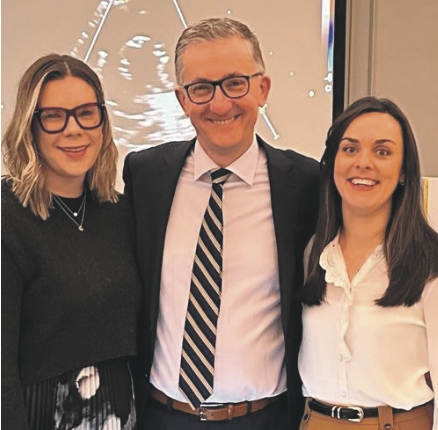
The Novartis cardiovascular medical team who assisted with the organisation of the meeting with the support of the steering committee and medical organiser, Dr Patrick O’Boyle. Pictured L-to-R: Ms Nora FitzGerald; Dr Agron Hasani; and Ms Sophie Clements
According to Dr Tahilyani, the results showed that patients enrolled in the SHORT trial did not have any inferior outcomes compared to patients being treated as per the standard protocol and no major side effects were noted with this approach. They also experienced a greater reduction in symptoms. “Importantly, patients enrolled in the SHORT trial have received optimal heart failure medical therapy in a shorter time span,” he said. The standard GDMT protocol accounts for a “huge resource consumption”, said Prof McDonald, noting that this approach represents a “major change”. Other attendees not- ed that in Ireland a number of barriers exist preventing this approach at present. Capacity when heart failure patients are hospitalised is one issue and access to guideline directed heart-failure treatments are restricted in Ireland.
Multimorbidity challenge in heart failure
The complexity of multimorbidity was further illustrated by Connolly and the Mater Hospital’s Prof Jim O’Neill who outlined a heart failure inpatient case study. Various complicating factors such as issues with medication and failure to communicate between teams/hospitals made this heart failure patient’s journey a trickier one, especially as this particular 77-year-old patient had so many multi morbidities such as pulmonary sarcoidosis, atrial fibrillation and worsening kidney function.
Having experienced a myocardial infarction some years before, he had received a number of stents as well as a primary prevention implantable cardioverter-defibrillator (ICD). Five years ago, he began to experience breathless- ness, which Prof O’Neill believed to not be cardiac in nature. Significant lung fibrosis was diagnosed, but he was doing well on low dose steroids. Having been stable until 2022, atrial fibrillation was then diagnosed following a sprint fidel is lead failure. In 2023, he presented with a chest infection, is believed to be having a sarcoid flare but finally receives a cardiac assessment. A device-related infection was identified, and the device was removed. Renal dysfunction became apparent, but despite treatment continued to worsen and again the patient presented with breathlessness, albeit to a different hospital. The patient was finally referred to the heart failure clinic. “Those of us who work in heart failure clinics get that sinking feeling – if only it were as easy as up- titrating the medications, what you have is a sea of complex multimorbidity, often with very limited data. Catching these complex patients and dealing with them comprehensively is very important.”
Given the extent of the patient’s lung issues, he would not be a surgical candidate but given his aortic regurgitation he was recommended to have a cardiac resynchronisation therapy (CRT) defibrillator device implanted and later a transcatheter aortic valve implantation (TAVI). “It shows that it is a real team sport. Multimorbidity makes things more difficult, we had many complex things going on in this patient, not just his heart.”
Benefits of a calcium score in the intermediate risk patient
The need for a calcium score was discussed by consult- ant cardiologist Dr Laura Murphy from the Mater Hospital. A coronary artery calcium score (CAC) is a non-contrast ECG-gated study carried out during a single cardiac phase. While it will identify the presence and amount of calcified coronary plaque, it cannot identify non-calcified plaque nor will it identify the severity of any stenosis, Dr Murphy explained. “It is suitable for low-risk patients with non-cardiac chest pain or asymptomatic intermediate or high risk patients with no known coronary artery disease reluctant to take medications.”
A CT coronary angiogram on the other hand uses contrast and requires a lot more patient prep but it will identify the presence and amount of calcified and non-calcified plaque, as well as estimate the severity of luminal stenosis. A CTA is safe and low risk, as well as being widely available. “It also has excellent negative predictive value as we know that if there is no plaque then the patient is very low risk.
Dr Murphy affirmed that most risk scores overestimate risk – studies have shown that predicted events as per risk scores far outweigh observed events. Risk scores are also less useful in younger patients, who can be classified as low risk despite strong risk factors, she added.
The CAC can ultimately reclassify patients identified as intermediate risk, she explained; one study showed that 25 per cent of patients were reclassified as high risk while 40 per cent were reclassified as low risk. CAC is also a better predictor of events, and Dr Murphy noted that a large proportion of people who had a normal stress test will go on to have events. In addition, knowledge of the CAC score has been shown to positively affect compliance with medication.
“The CAC can be used in addition to traditional risk scores to more accurately estimate patients’ risk and it can be used to identify those patients at the highest level of risk who would most benefit from prevention therapies,” concluded Dr Murphy.
The panel discussion that followed illustrated mixed views when it came to the use of CAC; Dr Ahmed Mansour of St Luke’s Hospital in Kilkenny said it is “ideally used as a screening tool”, whereas Dr Roger Byrne of the Mater Private Hospital said his approach is to start with CTCA for everyone, as it provides “immediate feedback” to the patient. Dr Niamh Murphy said the CAC helps identify people at intermediate risk if their calcium score is zero – “the power of zero”.
In conclusion, the lack of international speakers was noted by meeting chair and consultant cardiologist at St Vincent’s University Hospital Professor Kenneth McDonald, who said Irish doctors are at the forefront of these developments. “There is enough quality of experience on the island, which is a compliment to the growing investment in cardiovascular science in Ireland,” he said. The calibre of expertise and also the emerging talent was in evidence at this meeting.
We seem to be punching above our weight in Ireland with numerous speakers at this meeting having been involved in developing guidelines in Cardiology on a European stage for the ESC. There have also been many improvements made in Cardiology services in Ireland over the timeframe of the Frontiers in Cardiology meetings. Unfortunately we do have a way to go with a number of points of disparity being raised by the speakers and in discussion about both access to guideline directed medical therapies and diagnostics for the cardiovascular patients of Ireland.
The agenda and topics for the 18th Frontiers in Cardiology meeting were chosen by a steering committee made of 3 consultant cardiologists & 1 specialist registrar in cardiology.
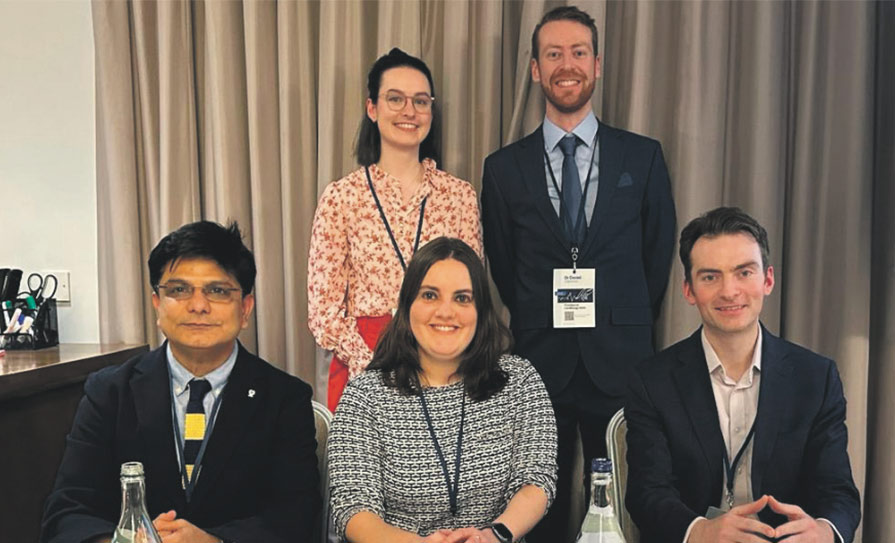
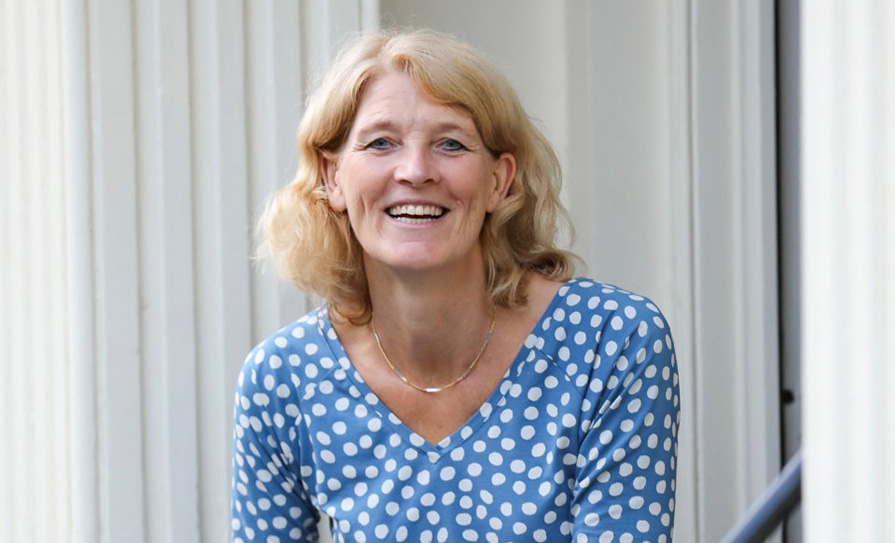


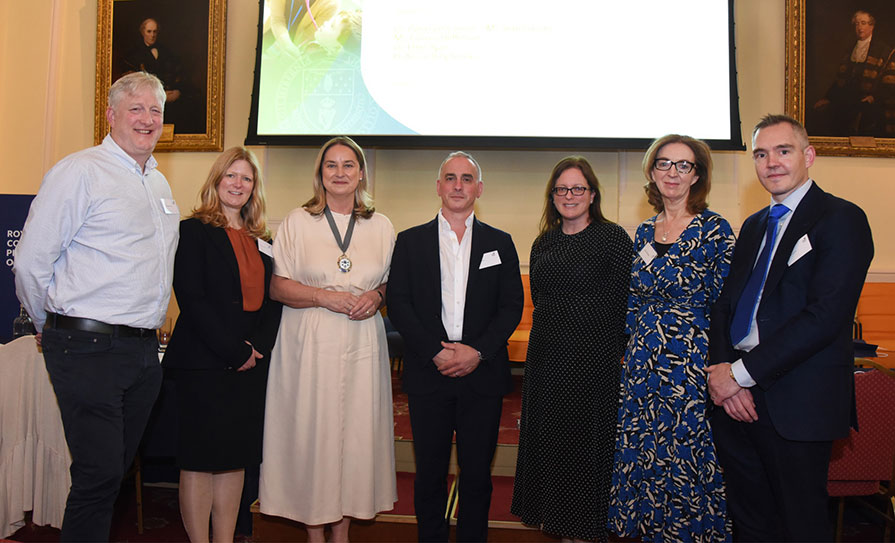


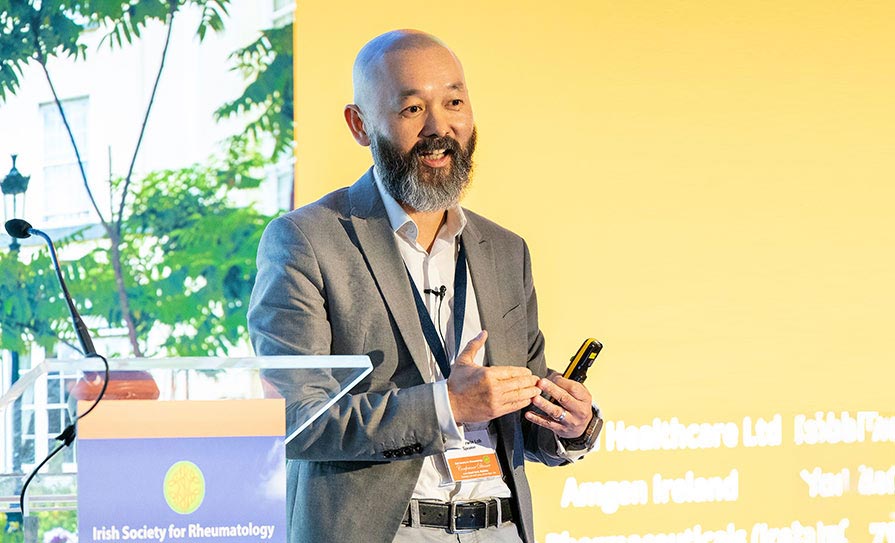





Leave a Reply
You must be logged in to post a comment.